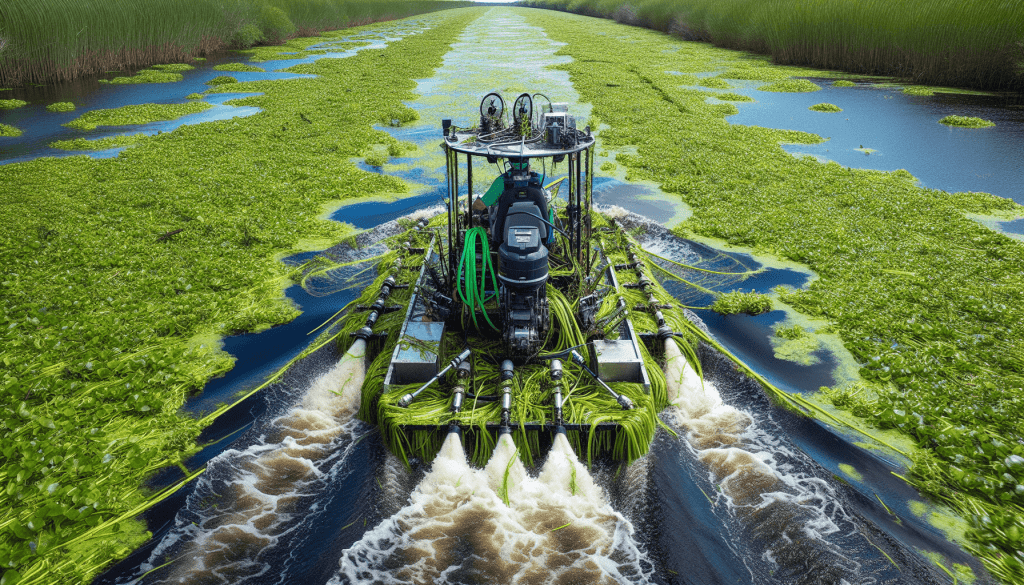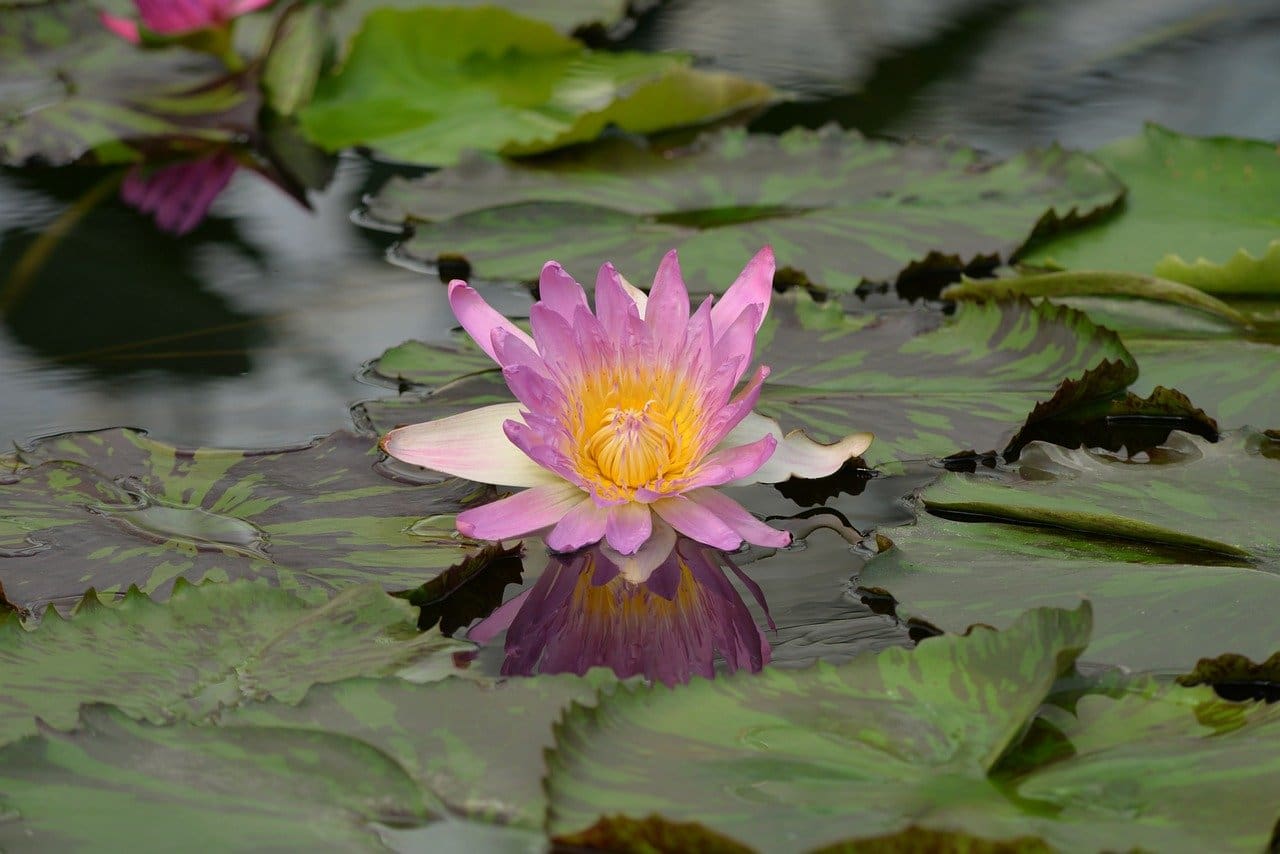You’re standing by the edge of a beautiful pond, but pesky alligator weed is taking over, diminishing the natural beauty and harming the ecosystem. In our guide, “Top Techniques For Removing Alligator Weed From Water Bodies,” you’ll discover effective and user-friendly methods to tackle this invasive plant. With step-by-step instructions, you’ll learn the best practices for manual removal, chemical treatments, and biological controls, ensuring that you can restore the health and beauty of your cherished water body. Dive into the article and become an alligator weed removal pro! Have you ever found yourself standing by the water, gazing at an otherwise beautiful pond, lake, or river, but instead spotted an aggressive, thick, green carpet of weeds you can’t ignore? If your answer is yes, there’s a high chance you’re dealing with Alligator Weed. Removing it can be quite the challenge, but don’t worry, you’re about to learn some top-notch techniques to handle this common yet stubborn aquatic invader effectively.
Top Techniques For Removing Alligator Weed From Water Bodies

Understanding Alligator Weed
Before diving into removal techniques, it’s essential to understand what Alligator Weed is and why it’s such a problem. Scientifically known as Alternanthera philoxeroides, this perennial weed can thrive both in water and on land. It’s known for its thick mats that can quickly cover large water surfaces, blocking out sunlight, reducing oxygen levels, and harming native ecosystems.
Identification
Identifying Alligator Weed correctly ensures you’re targeting the right plant. Here are key features to look out for:
| Characteristic | Description |
|---|---|
| Leaves | Opposite, simple, elliptic to lance-shaped, and sessile |
| Stems | Hollow, can float on water or creep on the ground |
| Flowers | White, papery, and ball-shaped, appearing from spring to fall |
| Growth Patterns | Forms dense mats on water surfaces or sprawling runs on land |
By knowing these details, you’ll have an easier task confirming that what you’re seeing is indeed Alligator Weed and not a look-alike.
The Problems With Alligator Weed
Alligator Weed brings about several ecological and economic problems:
-
Environmental Impact: Its dense mats block sunlight from penetrating the water column, which kills native aquatic plants and disrupts ecosystems.
-
Economic Impact: It can clog irrigation ditches and waterways, affecting agricultural activities and requiring expensive control measures.
-
Recreation: Dense mats make waterways unusable for recreation, such as swimming, fishing, and boating.
Now that you understand the problem, let’s tackle these weeds with a multifaceted approach.

Manual Removal Techniques
Manual techniques are labor-intensive but can be effective, especially for smaller infestations. They also pose minimal environmental risks, making them a good initial method.
Hand Pulling
Hand pulling can be done with the right tools and patience. Here’s how you can go about it:
-
Equipment Needed: You’ll require sturdy gloves, a rake, and a bucket.
-
Steps:
- Identify patches of Alligator Weed.
- Firmly grasp the plant near its base.
- Pull steadily to remove as much of the root as possible.
- Dispose of the plant material far from the water body.
Repeat this process regularly to control regrowth.
Mechanical Harvesting
For larger infestations, mechanical harvesting using specialized aquatic weed harvesters is more suitable.
-
Equipment Needed: Aquatic weed harvester, skimmer boats, and conveyors.
-
Steps:
- Use a harvester to cut the weed below the water surface.
- Collect and remove the weed with skimmer boats or conveyors.
- Ensure proper disposal away from the water body.
This method can quickly clear large areas but might need to be repeated every season.
Biological Control Techniques
Biological control involves using natural predators to limit weed growth. It’s an eco-friendly method but often requires patience and continual monitoring.
Biological Agents
Several biological agents have been identified for controlling Alligator Weed:
| Biological Agent | Description |
|---|---|
| Alligator Weed Flea Beetle (Agasicles hygrophila) | Feeds on leaves and stems, significantly reducing biomass |
| Alligator Weed Thrips (Amynothrips andersoni) | Causes damage by feeding on the plant’s soft tissues |
| Alligator Weed Stem Borer (Arcola malloi) | Bore into stems, disrupting nutrient and water transport |
Steps to Implement
-
Consult Experts: Always consult with a local extension service before releasing any biological agents.
-
Release: Introduce the biological control agents into the affected area.
-
Monitor: Regularly assess the population and health of the biological agents and the weed.

Chemical Control Techniques
Chemical herbicides can be very effective, especially in large infestations, but require careful application to avoid harming non-target species.
Choosing Herbicides
Select from systemic herbicides, which are absorbed and translocated within the plant, or contact herbicides, which act where they touch.
| Herbicide Type | Examples | Notes |
|---|---|---|
| Systemic Herbicides | Glyphosate, Imazapyr | Good for killing deep root systems but may take weeks to see results |
| Contact Herbicides | Diquat, Endothall | Quick action but less effective on well-established plants |
Application Methods
-
Foliar Spray: Use a sprayer to apply the herbicide directly onto the leaves.
- Best for smaller, accessible infestations.
-
Subsurface Injection: Apply herbicide directly into the water.
- Ideal for dense, underwater mats but requires precision to avoid contamination.
Safety Measures
-
Personal Protective Equipment (PPE): Always wear gloves, masks, and eye protection.
-
Environmental Precautions: Follow guidelines to protect wildlife and aquatic organisms.
Integrated Management Plan
Often, the best approach to controlling Alligator Weed is to integrate multiple techniques for sustained management.
Assess the Situation
- Infestation Size: Determine whether it’s a small patch or a widespread problem.
- Sensitivity of the Ecosystem: Evaluate the potential impact on non-target species.
- Resources Available: Consider the budget, manpower, and equipment accessible.
Develop a Plan
- Initial Knockdown: Use manual or mechanical harvesting for immediate reduction.
- Sustained Control: Introduce biological agents for long-term maintenance.
- Herbicide Treatment: Apply herbicides in hard-to-reach areas or severe cases.
Monitor and Adapt
- Regular Monitoring: Continuously assess the effectiveness of your methods.
- Adjust Techniques: Be ready to switch methods if weed re-establishment occurs.

Community Involvement and Awareness
Community involvement can amplify the effectiveness of your weed management efforts. Engaging locals in the process can foster a sense of shared responsibility.
Educational Workshops
Host workshops to educate residents about Alligator Weed:
- Identification Skills: Teach community members how to recognize the weed.
- Removal Techniques: Demonstrate both manual and biological methods.
Volunteer Programs
Organize volunteer weed-pulling events or monitoring patrols. These efforts not only manage the weed but also strengthen community bonds.
Reporting Systems
Set up a system for locals to report sightings of Alligator Weed. Early detection can significantly ease control efforts.
Prevention Tips
Preventing new infestations is just as crucial as dealing with existing ones. Here are some proactive measures:
Regular Inspections
Conduct regular inspections of water bodies, especially during growing seasons. Early intervention can stop small patches from becoming major problems.
Installing Barriers
Physical barriers in water bodies can help prevent the spread of Alligator Weed.
| Type of Barrier | Description | Use Case |
|---|---|---|
| Floating Booms | Prevent weed fragments from drifting away | Suitable for large areas |
| Silt Curtains | Block the passage of weed fragments in currents | Ideal for smaller water bodies |
Promoting Native Vegetation
Healthy native vegetation can outcompete invasive species like Alligator Weed. Encourage the growth of native plants along water edges.

Case Studies
Sometimes real-life examples can illustrate the success of various techniques.
Small Lake in Florida
In a small lake in Florida, an integrated approach was used combining manual removal, introduction of Alligator Weed Flea Beetles, and targeted glyphosate application. This resulted in a 70% reduction in Alligator Weed within two years.
Agricultural Canal in California
The use of mechanical harvesters combined with subsurface injection of diquat effectively cleared Alligator Weed from an agricultural canal in California. Regular follow-up treatments every six months maintained control.
Conclusion
Tackling Alligator Weed in your water bodies can be a daunting task, but armed with the right knowledge and techniques, you can restore health and beauty to your aquatic environment. By combining manual, biological, and chemical methods within an integrated management plan, and engaging your community, you can significantly reduce the impact of this stubborn invader. Remember, prevention is always better than cure, so keep a vigilant eye and act swiftly to maintain your waterways lush and thriving. Happy weed-busting!
